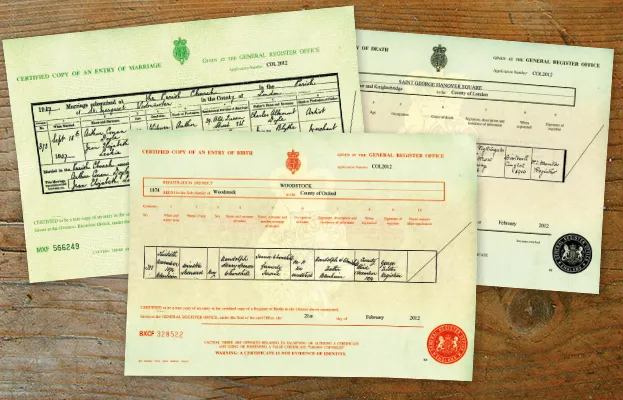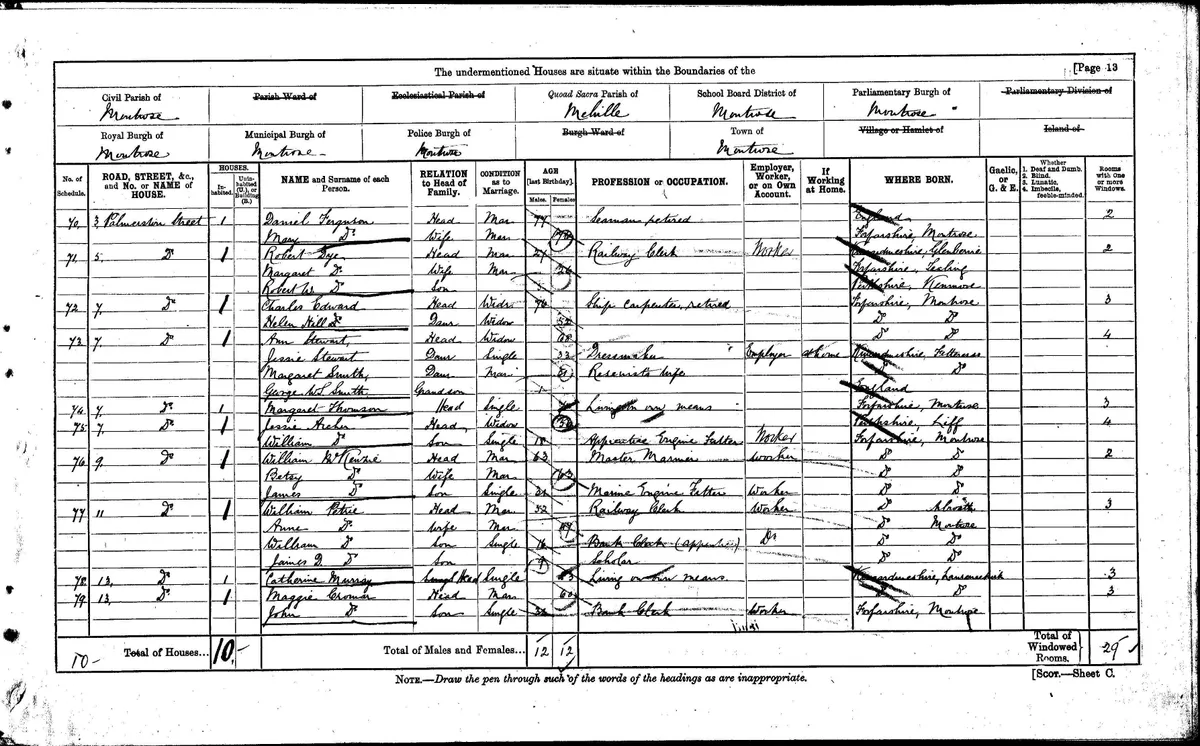Do you want to start your family tree? We've invited Laura Berry, the lead genealogist on the Who Do You Think You Are? TV series, to share her tips on how the Who Do You Think You Are? team uncovers the celebrities’ family histories and the first steps you need to take to uncover your own.
How to find your family tree
When researching a celebrity’s family tree for the show, we start by finding out what they know already. You should do the same!
1 - Write down what you know already. Take a blank sheet of paper and try drawing a family tree starting with yourself at the bottom of the page and a branch up to your parents. Continue back as far as you can. This will help you see where the gaps in your knowledge are.
2 - Track down the family archive. Look for family documents, letters and old photographs as these will help fill in gaps. Ask relatives if they have any useful material.
3 - Make a plan. Think about what you would like to find out. This is a really important question that we ask all of the celebrities, because it will form a framework around which we can plan our research.
4 - Contact family members. Extended family can alert you to additional mysteries that need resolving, and have documents and photographs you’ve never seen before. Talk to older members of your family and keep notes of all your conversations. As you progress in your research you might pick up on something significant in your initial notes that you didn’t think was very important at the time.
5 - Collaborate with others. See if you can collaborate with a relative. Two pairs of eyes are often better than one and you can divide any costs. Some family history websites allow members to save their family trees online and get in touch with other tree owners who share an ancestor. We often use this method of tracing people for Who Do You Think You Are? Remember, online and even printed family trees can contain errors, so be sure to verify the facts with as many sources as possible.
6 - Get organised! You’ll need to keep well-organised notes. There are lots of family history software packages as well as websites that help you build a digital family tree and keep your research in one place. At Who Do You Think You Are? we also compile a Word report for each celebrity, giving an overview of the records found for each ancestor, with transcriptions of all the documents we’ve located.
You may also like:
- How to write a family history
- 100 cool British last names: From Anguish to Wildblood
- 12 ways to share your family tree
How to trace your family tree: Birth, marriage and death certificates
Once you’ve started a family tree with the family members you know, you can search for their birth, marriage and death records via the General Register Office (GRO) website for England and Wales and the ScotlandsPeople website for Scotland.
Certificates are vitally important for building your family tree and proving the connections between each person.
Births registered from September quarter 1911 include the mother’s maiden name in the index, which makes it easier to pinpoint the right birth during the 20th century. The new indexes on the GRO website however now include mother's maiden name all the way back to 1837 and some subscription websites, such as Findmypast, are starting to also add this detail.
If you’ve found a marriage certificate (which will confirm the ages of the bride and groom and names of their fathers), the next step is to look for birth certificates for the happy couple. There may be more than one likely entry in the index, particularly for common names, so you may need to purchase several certificates to establish which one is correct. Full certificates for England and Wales cost £11 each, although you can order some birth (1837-1920) and death (1837-1957) records in a PDF format for just £7 each. You can also order births from 1837 to 1922 and deaths from 1837 to 1957 as digital images with instant access for £2.50 each. Scottish records can be ordered digitally using credits on ScotlandsPeople.

The GRO marriage index cross-references the spouses’ names from 1912 onwards, nevertheless, it is still possible to identify a marital match between two surnames prior to 1912 with a little bit of trickery online. One method is to search for a bride and groom with the same year, quarter and place of marriage and registration numbers. Alternatively, FreeBMD does the hard work for you, automatically locating those names with matching registration details.
You may also like:
- The best websites for tracing Caribbean ancestors
- Explore the female ancestors in your family tree
- How to find divorce records in England and Wales
English and Welsh death certificates are not as informative as birth and marriage certificates but can still be helpful, particularly for researching older generations born before July 1837. A death certificate confirms the deceased’s age, and from 1969 exact dates of birth are given. The informant was usually a relative and their details can be useful for confirming suspected links in your tree. Death certificates will also detail the cause of death which might be of interest.
Birth, marriage and death certificates also provide home addresses, which might help to locate your family in other records like electoral registers.
Civil birth, marriage and death records for Scotland are available from ScotlandsPeople and are generally more informative than those for England and Wales. If you are researching family from Scotland, then take a look at our guide to Scottish records. Records for Northern Ireland are available from the General Register Office (Northern Ireland) and in some cases on Irish Genealogy.
How to start a family tree: Census records

The next major tool for starting a family tree is census records. A census of the UK's population is carried out every ten years and census records from 1841 to 1911 are available online from all the major genealogy websites as well as FamilySearch (although Scottish census records with images are only available from the ScotlandsPeople website). The 1921 census records for England and Wales are only available on Findmypast. They are an essential tool for family historians because they record families at home, giving details of both relationships and occupations. Often the census is the only record that will tell you how your ancestors earned their keep.
Once you know when and where your ancestor was born, you can search for people with a matching name and date and place of birth to see where they were living every ten years. Alternatively, you can try to build backwards from census records to find your ancestor’s birth record. You can discover more about the best places to search for your family on the census as well as what information was provided in each decade in our guide to census records.
How to continue to research your family tree
Once you've got started on your family tree, don't miss our guides to more advanced records you can use to find out more about your ancestors' lives:
- How to search for baptisms and marriages in parish registers
- How to find wills
- How to use old newspaper collections
- The best free genealogy websites








